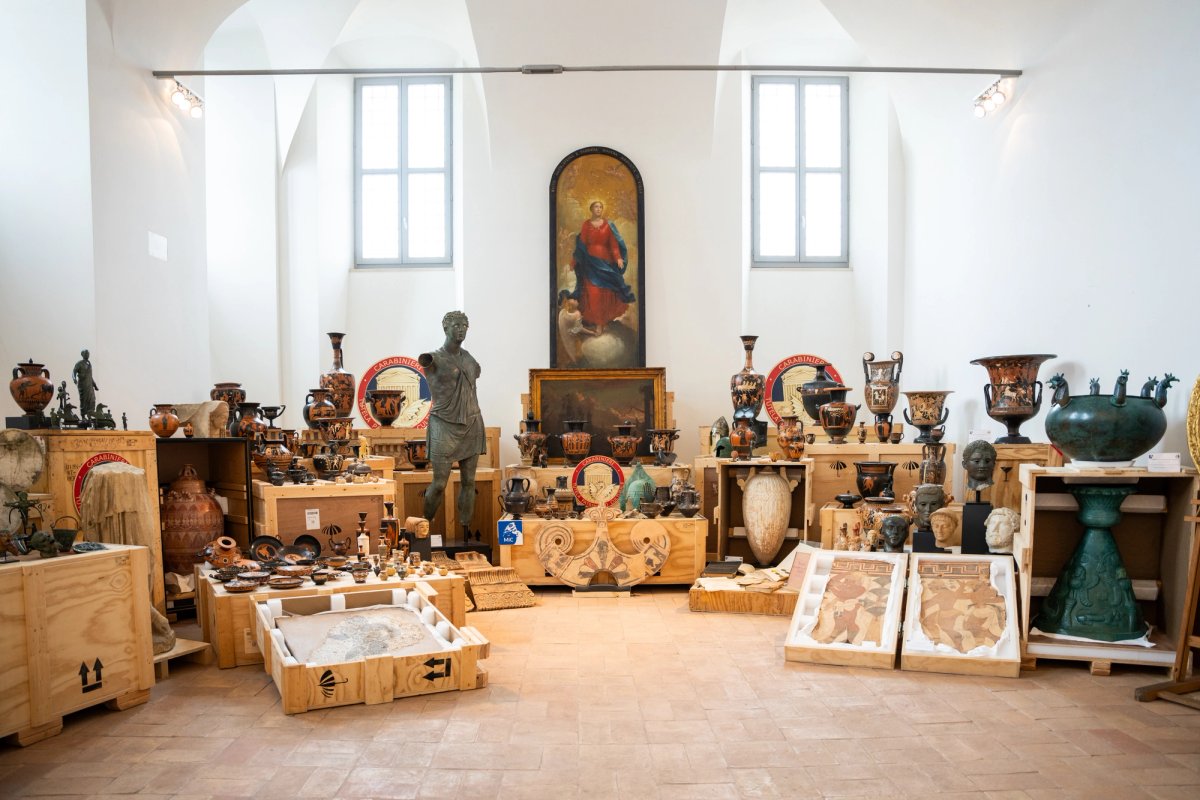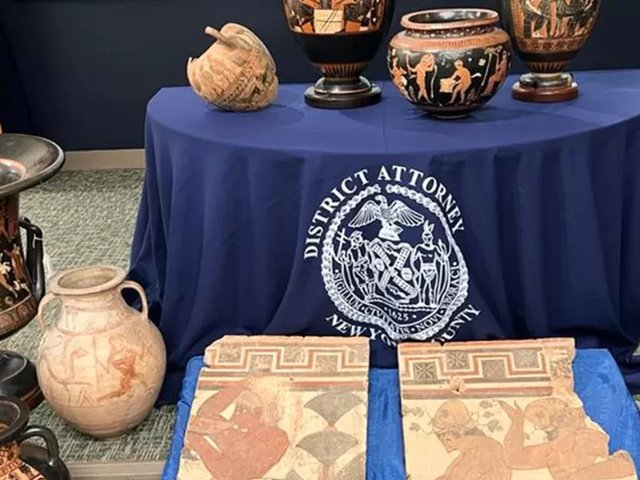More than 600 pieces of art worth an estimated total of €60m have been sent from the United States back to Italy after the works—which were illegally excavated in Italy or stolen before being taken to the US—were discovered at auction houses, in art galleries and even within private collections.
Most of the works date from the 9th century BC to the 2nd century AD, according to the Carabinieri art squad, the branch of Italy’s national police that handles most of the country’s art crime cases. The department said the objects are mostly archaeological artefacts, along with some antiques, archival materials and rare coins, many sourced from “clandestine excavations” in central and southern Italy, and thefts from churches, museums and private collections.
This week, officials celebrated the return of the objects, which were able to be repatriated thanks to investigations conducted by the Carabinieri in collaboration with multiple prosecutor's offices, with assistance by the Manhattan District Attorney's Office and an investigative unit of US Homeland Security, the Italian police said. The repatriated items were seized from museums, dealers, private collections, intermediaries in the art market as well as known traffickers.
Among the most valuable objects recovered is a silver tetradrachm coin from the Greek island of Naxoes, believed to date back to the 4th century BC, according to a press release from the Carabinieri. The coin has the image of the wine gods Dionysus and Silenus on either side, and was illegally excavated in Sicily before being shipped to the United Kingdom. The coin was seized last year after it was put on sale for $500,000 in New York. Another coin, a silver one with a portrait of the Roman emperor Trajan, which was stolen from a museum in Pesaro, Italy in 1978, was located at a Philadelphia-area auction house. A group of gold coins that had been seized by thieves in 2009 at a Parma museum were traced by US authorities to auction houses across the nation, including in New York, Dallas, Los Angeles, Chicago and Puerto Rico, according to the Carabinieri. One of the strangest anecdotes shared by Italian authorities is that investigators found 17th century Dutch artist Hendrik Van Minderhout’s painting of a harbour scene in “a tunnel in New Orleans” after it was stolen from a private owner in Salerno in 2004, according to the press release.
The Carabinieri’s art squad has been aided by the use of artificial intelligence (AI) tools like the “Stolen Works Of Art Detection System” programme, which uses AI to search for stolen objects listed for sale online or on social media. Last year, investigations using the new technology resulted in the return of around 105,474 objects estimated to be worth €264m, the Carabinieri said.
One object that wasn’t included in the collection of repatriated objects was the ancient Greek bronze called Victorious Youth, which since 1977 has been part of the Getty Museum’s collection in Los Angeles. In May, the European Court of Human Rights ruled Italy may continue its claim on the work, which Italy has argued for decades was illegally exported. The statue was discovered by Italian fishermen off the coast of the Adriatic Sea in 1964, and purchased by the Getty in 1997 for $4m from German art dealer Herman Herzer.





